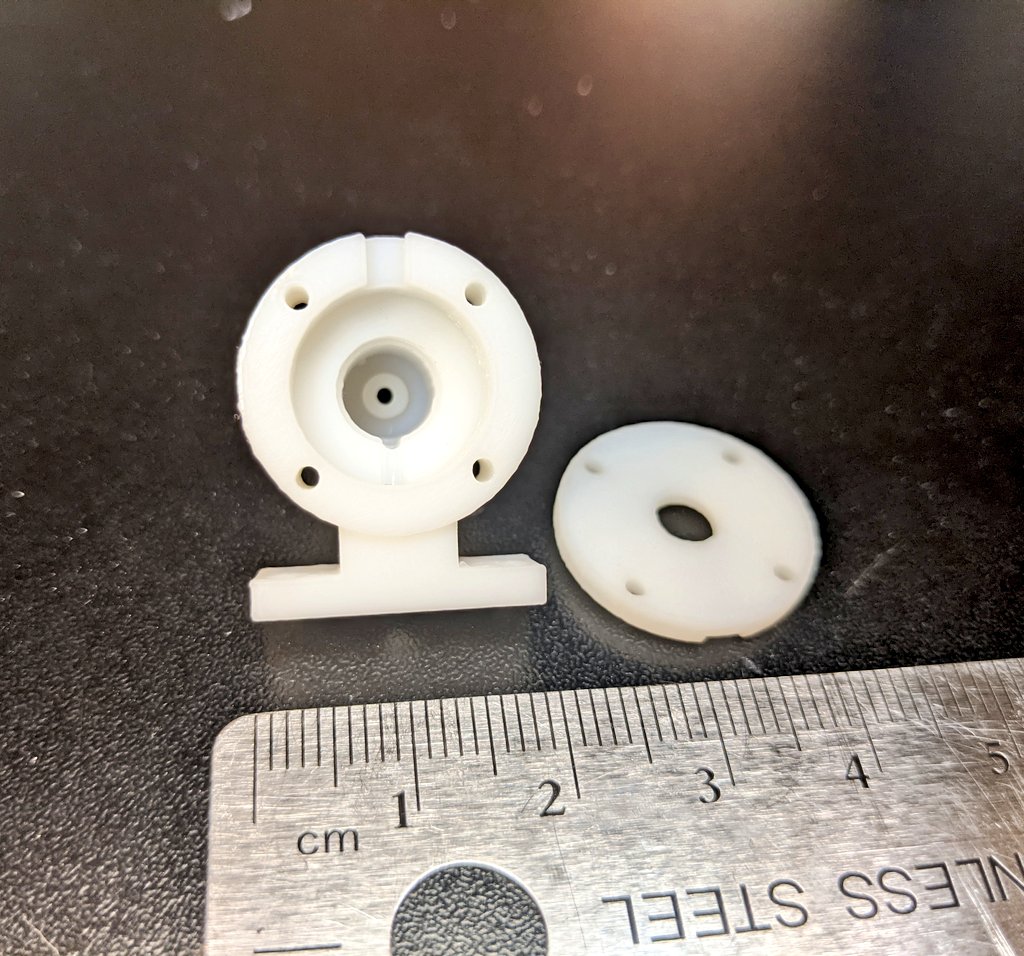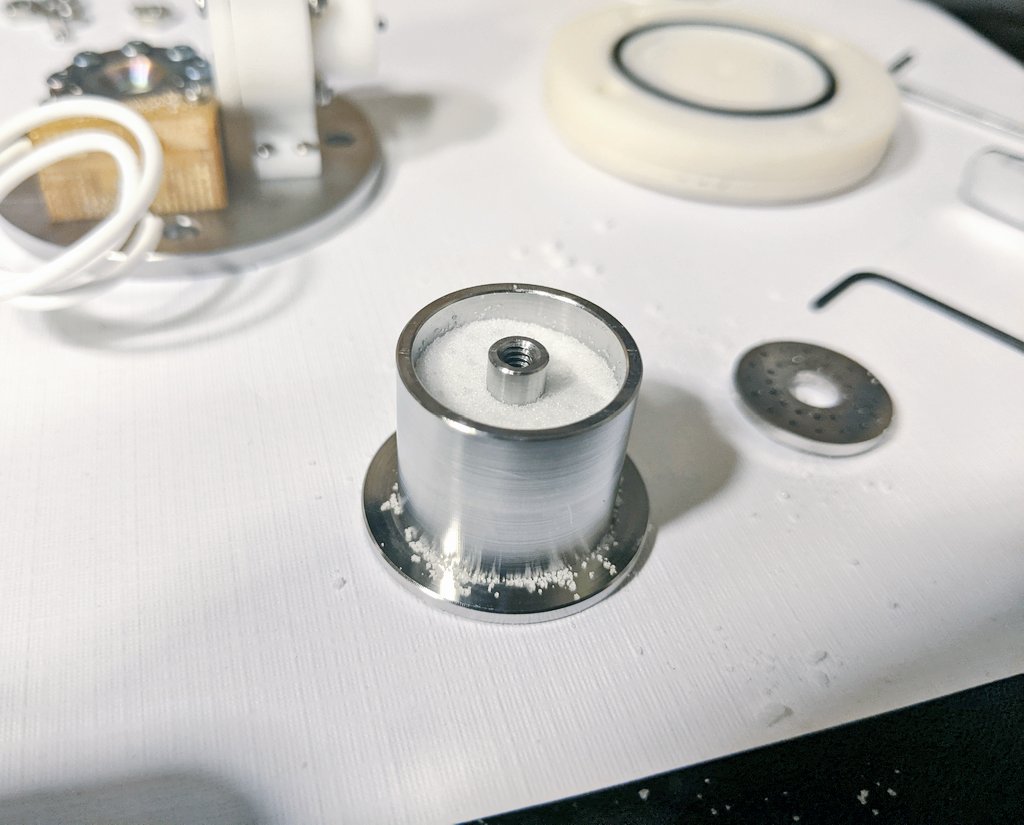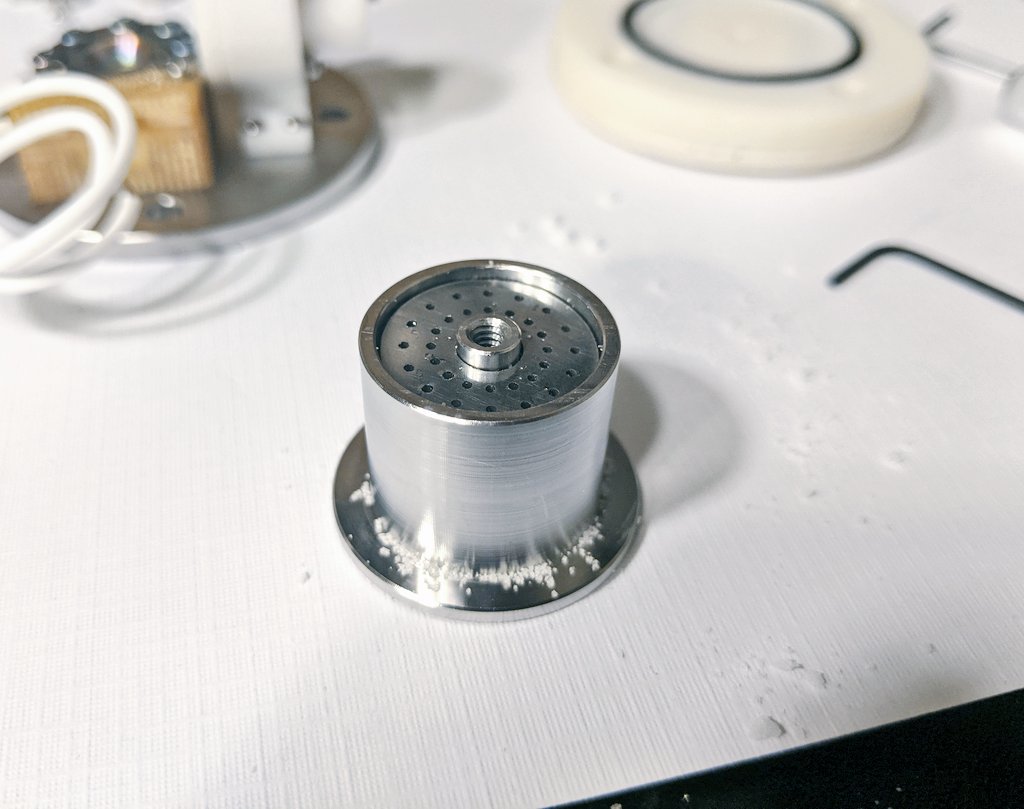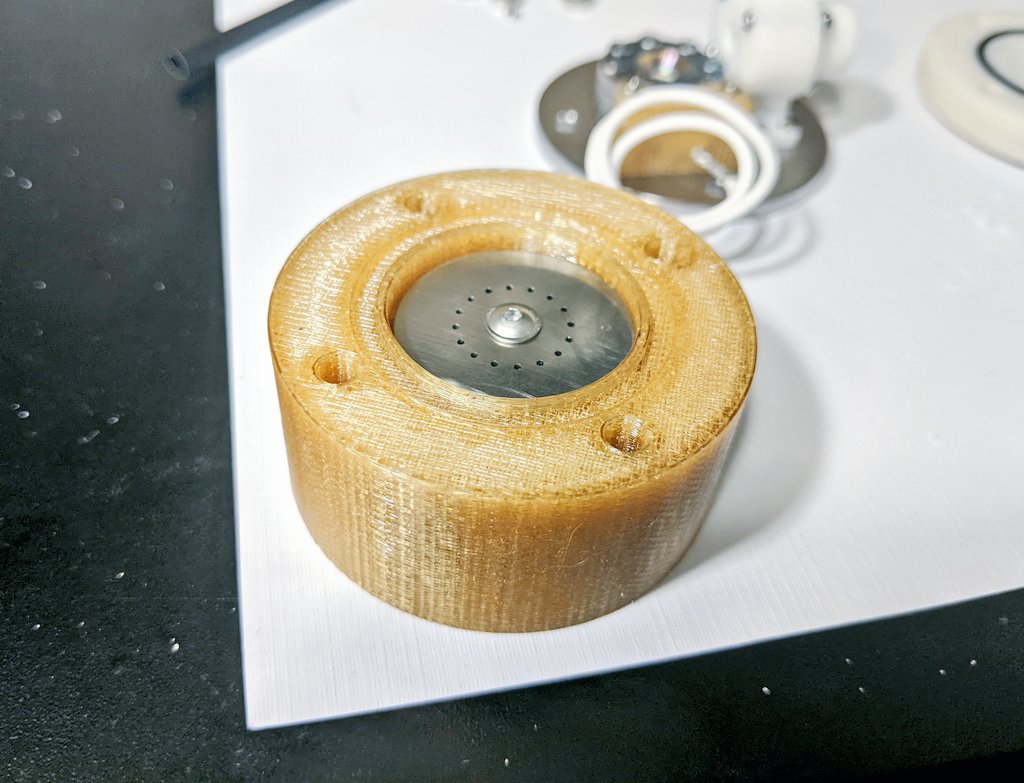Another week at AIS, and another resounding success for the AIS ADAMANT Series. This past Saturday I ran the AIS-GDN1 Glow-Discharge Hollow-Cathode Neutralizer for the first time ever to a great success. In this post, I will review the test, as well as reveal the next steps moving forward in this development.
The test was livestreamed with live chat on from the AIS YouTube page. You can see the replay of the test below.
As a brief recap, the GDN1 is a highly experimental micro hollow-cathode neutralizer for the EHT1 Micro End-Hall Thruster. Unlike typical hollow cathodes in EP, the GDN1 operates in a cold-cathode glow-discharge mode at high voltage, low current, eliminating heaters, inserts, or RF. The cathode itself is incredibly small, and is a simple hollow stainless steel cup design. Cold cathode e-beam sources are common in particle physics/experimental beam processing, but have not really found there way into EP for neutralizer tech yet.
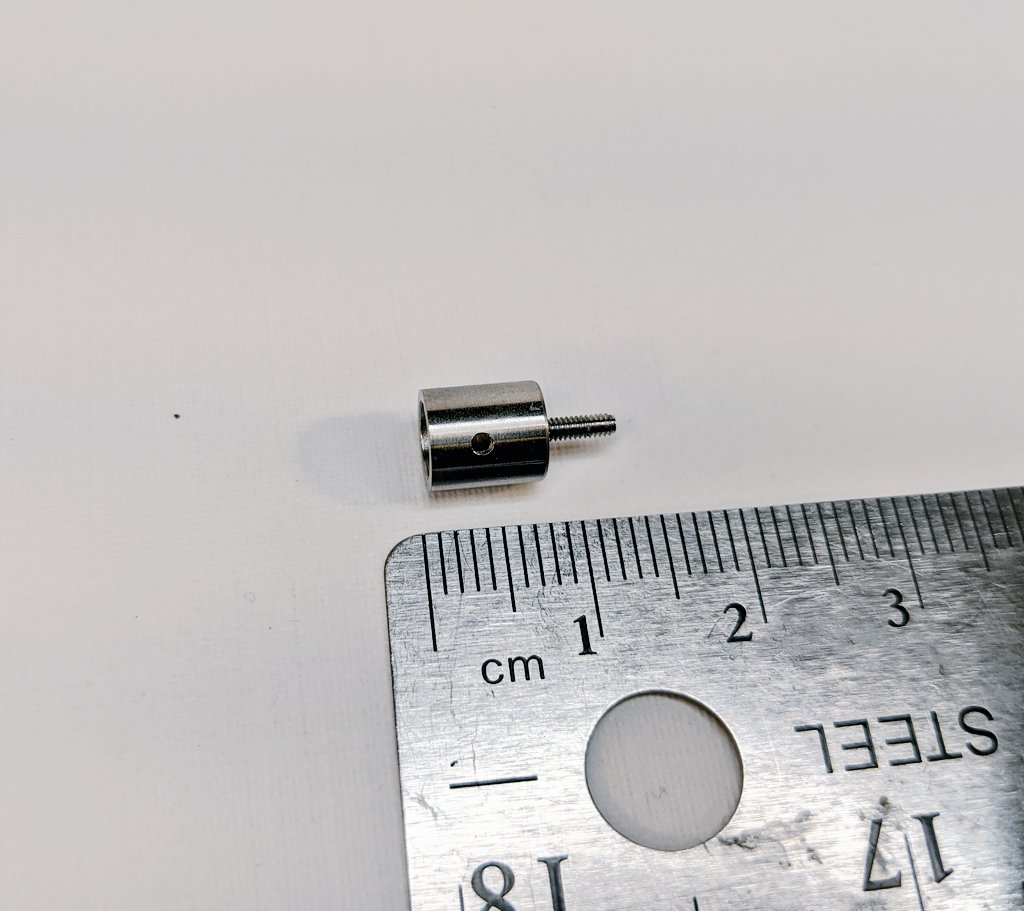
The entire cathode assembly measures 20x20x24mm. The housing, made from Somos PerFORM SLA resin, has passed it’s first trial run in this extreme environment. The cathode also uses simple stainless steel anode/extractor electrodes with off the shelf ceramic inserts.
Setting up for the actual test, the neutralizer is first mounted to the EHT1 Micro End-Hall Thruster head. The thruster itself wasn’t fired during the test, just the cathode was operated.
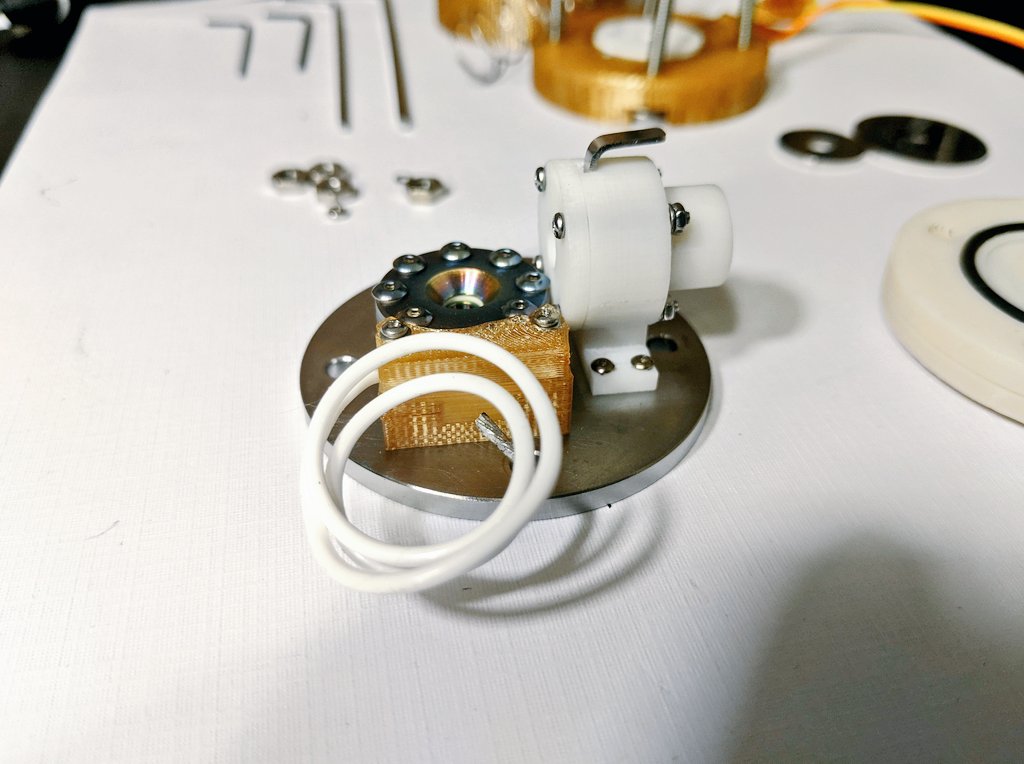
Next is refueling the thruster. Adamantane is poured into the heater cartridge. This time, I went for a full fueling and packing the fuel down tightly to get as much as possible for this test, since both the thruster and neutralizer gas feeds were open.
The heater cartridge is inserted into the SFDS housing and bolted down to seal it in place.
The valve housing (without a valve) and the thruster head are bolted onto the SFDS. Since I wouldn’t be be firing up the thruster head, the anode feed wire was left disconnected from power.

The hollow cathode is now wired up, wires secured, connections and power checked, and ready to go! The system is then mounted up into the vacuum chamber. Unfortunately setup was even more hell than last time. Multiple feed wires breaking, along with fitting a full Hall thruster system in a 6″ conflat chamber is a real challenge!
Pumpdown was a bit more of a challenge than the Hall thruster ignition test, due to the increased gas load from the extra fuel, and no valve to close off the system from passively sublimating fuel in vacuum. At about mid-10^-4 Torr, the test was started. First, the sublimation heater power was turned on to a nominal power of 3.5W. The hollow cathode discharge supply was turned on to about -1kV, and the extractor power was turned on to +1kV.
During the test, I spent a long time fiddling with varying both discharge and extractor supplies to no avail. I just couldn’t get an output plume. After a while, I decided to bump up the fuel flow rate by increasing sublimation power to 6.5W. However, no discharge was observed.
At that point, I turned off the extractor supply, and started lowering the discharge supply down. At a very low voltage of only a couple hundred volts, I began to see a glow from the hollow cathode! After that, I switched back on the extractor power, and raised it up. Success! A glow was emanating from the neutralizer!
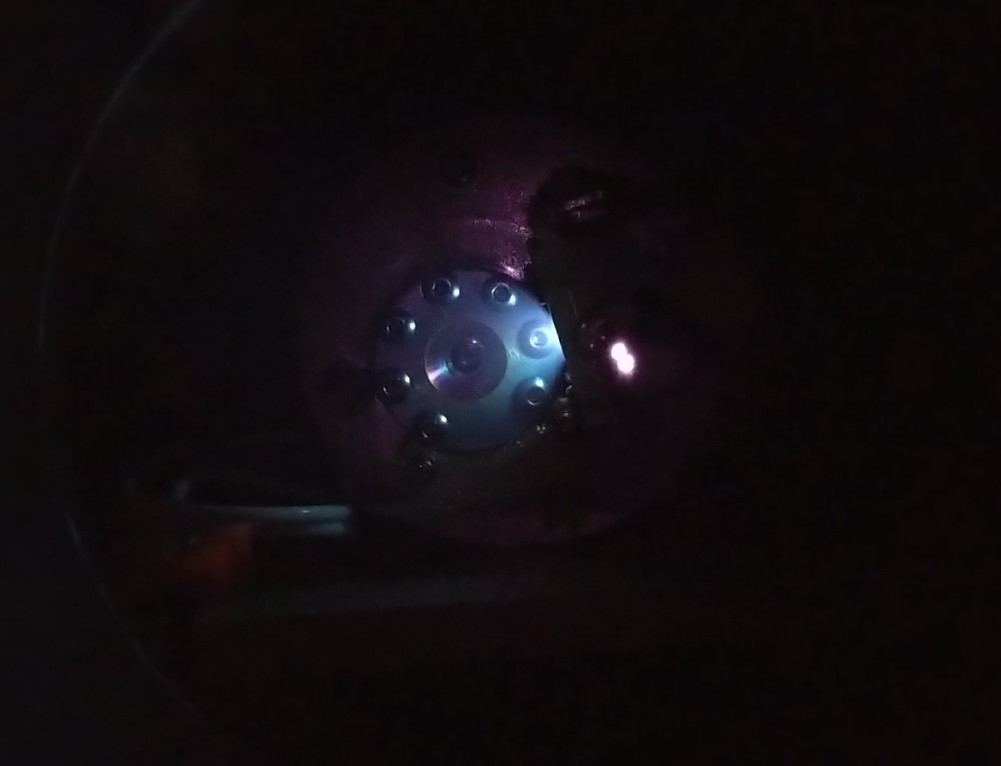
Here you can actually see a video of the neutralizer in action after output was finally achieved:
After a bit of adjusting, I found the point for optimal output, with the discharge at very low voltage, and the extractor at maximum voltage.

Here, you can see a video of the neutralizer operating at peak output:
The cathode was run until the flickering became more severe, indicating that the fuel was near depletion. After, the test was ended, and video analysis began.
First, during the test, I validated operation observed during the third preliminary sublimation and glow discharge ionization test using the glass test cell, set up to simulate this cathode operation. In both cases, peak output was observed at minimum discharge power and max extractor power.
Interestingly, the discharge voltage is significantly less than expected, a couple hundred volts max. Too high or too low and the discharge extinguishes. This is most likely due to the geometry coupled with the operating voltage and how the regions of a glow discharge evolve. When the discharge voltage is shut off, output stops. When too high, plume output significantly diminishes. However, plume output is smoothly controlled with extractor power. When the extractor is off the plume extinguishes but glow discharge inside the cathode can still be seen.
Besides validating operation of this highly experimental cathode and figuring out exactly how to run it, another crucial aspect of this test was to see if the fuel flow rates to both the EHT1 thruster and GDN1 would be simultaneously enough. Based on testing, it does look like I definitely need to bump up fuel flow rates a bit more. Sublimation heater power had to be increased from the normal 3.5W power I have been running at to over 6W power. This can be offset however by increasing the fuel feed hole diameters.
Last week the EHT1 Hall thruster successfully demonstrated beam with a filament neutralizer. This past week, the GDN1 was successfully operated for the first time as well. Now moving forward, I will begin preparations for developing a dedicated power supply to run both together. Work is already underway on the power supply and total system integration. It is proving quite a challenge to keep everything extremely compact and simple and will take some interesting mounting to get it all together. Preliminary models have the full system with electronics and smallest fuel tank at ~73x51x90mm giving me an effective total volume of about 1/3U for everything. In addition, it looks like I will be able to fit the system almost completely within standard 3U tuna-can allowance.
So far this year I have already successfully completed 4 preliminary tests, Phase I Hall thruster ignition, and Phase II hollow-cathode ignition. Phase III will run both the Hall thruster and neutralizer. Once validated, I can begin on valve development and optimizing the design. With the data I have so far, I can now not only continue developing and optimizing this system, but work on scaling both smaller and larger, as well as pushing forward on other Adamantane fueled Hall, RF plasma, and gridded ion thrusters, covering from 10-50W class systems.
To the best of my knowledge this is the first time such a neutralizer design has been demonstrated in EP, as well as successfully run on Adamantane fuel. I hope that I can say that AIS is truly pioneering new territory in the field, and is leading Adamantane based systems for EP.

